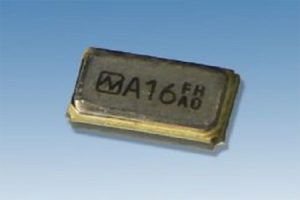How does Load capacitance effects circuit performance?
What is Load capacitance?
- The term “load capacitance” describes the overall capacitance that a driver must drive, which includes both the capacitance of the load and any extra capacitance that could be present in the circuit. Especially in high-speed applications, load capacitance in electronic circuits can impact the circuit’s performance and stability.
- For instance, this capacitance in digital circuits is the capacitance of a logic gate’s input coupled to the output of another gate or a driver. The load capacitance can impact the propagation delay of the signal, which is the amount of time it takes for the signal to go from the output of one gate to the input of another. The speed of signal transmission decreases with increasing load capacitance.
- This capacitance impacts the frequency response and bandwidth of analogue circuits. As an illustration, the capacitance across the resistor in an RC circuit serves as this capacitance and can impact the cutoff frequency and the circuit’s time constant. It is crucial to consider this capacitance while designing circuits to guarantee appropriate operation and stability. If necessary, additional series or parallel capacitance can be added to account for the capacitance of the load, or a suitable driver or buffer can be chosen for the load.
How Does Load Capacitance Impact the Performance of a Circuit?
Circuit performance may be significantly impacted by load capacitance, which can change circuit speed, frequency responsiveness, and signal integrity. To achieve optimal performance and stability, this capacitance must be carefully considered while designing and choosing components for a circuit. The performance of a circuit can be dramatically impacted by capacitance in several ways. Here are a few illustrations:
- Signal propagational delay:
This capacitance can impact the signal’s propagation delay in a digital circuit. It is just the time it takes for a signal to travel through a circuit from one point to another. The output signal of a gate takes longer to rise or fall when the load capacitance is large, increasing the circuit’s total propagation delay. A slower circuit speed, a lower working frequency, and more power consumption may be the effects of this delay.
- Frequency response:
This capacitance can also impact an analogue circuit’s frequency response. This capacitance can impact a circuit’s bandwidth and frequency responsiveness when it is intended to operate within a specific frequency range. Low signal amplitude, distortion, and constrained frequency response can all be caused by high load capacitance.
- Signal integrity:
The signal integrity of a circuit can also be impacted by load capacitance. A circuit’s signal may experience reflections, ringing, and other distortions that might lead to data transmission mistakes when the capacitance is large. This may lead to signal integrity problems, lower signal-to-noise ratios, or data loss or corruption.
Why is load capacitance knowledge essential for Electrical Design?
Load capacitance can impact electronic circuits’ performance and stability, making its understanding essential for electronic design. Load capacitance must be carefully considered throughout the design process to ensure appropriate circuit performance and prevent issues later. Following are some justifications for why it’s crucial to comprehend this capacitance:
- Timing and signal integrity:
As noted, this capacitance impacts the frequency response and signal propagation delay. Even little variations in signal propagation delay can substantially influence timing in high-speed applications like digital circuits and result in circuit failure. High capacitance in analogue circuits can compromise the signal’s integrity and cause noise and distortion.
- Power consumption:
In particular, in digital circuits, this capacitance can impact power consumption. High load capacitance causes greater power consumption since it takes longer for the output signal to stabilize. This might result from heating, a shorter battery life, and other issues.
- Component selection:
When choosing electrical components for a circuit, load capacitance is a crucial factor to consider. For example, drivers, buffers, and amplifiers are made to function in various capacitances. If the load capacitance exceeds the specified range, the component might malfunction, resulting in circuit failure.
- Circuit stability:
Circuit stability may be impacted by load capacitance. Instability and unpredictable behaviours might result from oscillations or ringing caused by high capacitance. Data corruption, system failure, and other issues might come from this.
What are the advantages of load capacitance?
Many advantages of this capacitance may be found in electrical design. The following are some of the primary benefits:
By functioning as a low-pass filter, this capacitance can assist in removing high-frequency noise from a signal. This may lead to a greater signal-to-noise ratio, lower distortion, and increased signal quality.
- Enhanced stability:
Load capacitance can enhance circuit stability by lessening the effects of parasitic capacitance, which can lead to oscillations and ringing. It is possible to increase circuit stability and guarantee good circuit functioning by adding a load capacitance of the right size.
- Impedance matching:
The impedance of a source and a load can be matched using this capacitance. For optimal power transmission between a source and a load, impedance matching is crucial, and in some circuits, load capacitance can be employed to accomplish this.
- Enhanced power efficiency:
By lowering signal transition times in some circuits, this capacitance can aid in power reduction. This may lead to increased power efficiency and decreased heat production.
- Circuit protection:
This capacitance can shield circuits from voltage spikes and other transients by creating a decoupling effect. This can enhance the circuit’s overall dependability and aid in preventing harm to delicate electrical components.
Conclusion:
Impedance matching, greater power economy, enhanced signal quality, increased stability, and circuit safety are just a few advantages load capacitance may offer in electronic design. While designing a circuit, it is crucial to carefully take load capacitance into account to make sure the circuit performs dependably and effectively. Our business has always sought to increase the value of our customers by offering a full range of solutions for various frequency control components, components, and modular design needs to satisfy all of their requirements. ChipSun Technology has consistently surpassed customers’ expectations regarding price, quality, delivery, and other factors.

